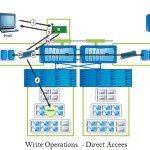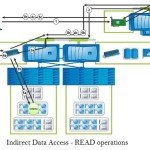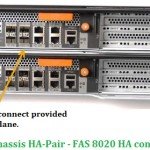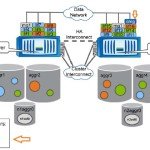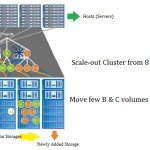This article is going to explain about the Netapp write operations. In Clustered Data ONTAP , write request might land on any of the cluster node irrespective of the storage owners. So that data write operations will be either direct access or indirect access. The Write requests will not send to the disks immediately until CP […]
NetApp Clustered ONTAP
NetApp – Clustered DATA ONTAP – Read Operations – Part 4
There is a huge difference between DATA ONTAP 7 Mode and C-Mode on data access methods. In 7-Mode, we will be having HA pair controllers to access the data. When the request comes , it will go to any one of the HA controllers. But in C-Mode , Multiple controllers will be aggregated in the cluster and […]
NetApp – Clustered DATA ONTAP – FAS Series – Part -3
NetApp FAS unified storage arrays available in wide range of configurations to meet the current business needs. Clustered Data ONTAP operating system is available for all the FAS unified storage arrays. Each of the Netapp FAS platforms can be configured with SATA, SAS, or SSD disk shelves, and shelves can be mixed. This allows you to scale performance and […]
NetApp – Clustered DATA ONTAP – Objects and Components – Part 2
This article is going to explain about the NetApp clustered DATA ONTAP’s physical objects and virtual objects. Physical elements of a system such as disks, nodes, and ports on those nodes―can be touched and seen. Logical elements of a system cannot be touched, but they do exist and use disk space. For the NetApp beginners […]
NetApp – Clustered DATA ONTAP – Overview – Part 1
NetApp is very popular for NAS (Network Attached Storage) from the past decade . In 2002 , NetApp would like to change the NAS tag to SAN. So they have renamed their product lines to FAS (Fabric Attached SCSI) to support both NAS and SAN. In the FAS storage product lines, NetApp provides the unique storage solution which […]
How to find the Redhat Linux version & Release details ?
Are you new to Redhat Enterprise Linux ? If yes, this article is going to help you to identify the Redhat Linux version, code name, release name and kernel version. You may require those details to check the application compatibility or future Operating system update. By viewing “/etc/redhat-release” file, you can identify the Redhat version. “unmae […]
